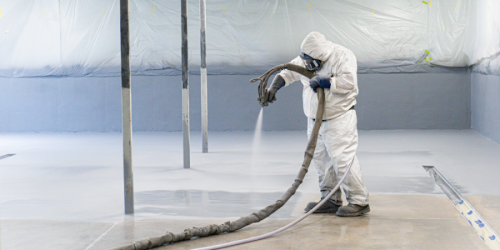Q&A Forums
Quickbooks Post New Topic | Post Reply
| Author | Comments |
|---|---|
|
SPFer
Posted: Feb 18, 2009 12:31 PM
|
Quickbooks
Do any of you use Quickbooks for your foam business? My main question is how to deal with material as an asset. If you buy your material in bulk, how do you track daily, weekly foam usage, foam inventory and monthly profit? This question might be easier to discuss over email or the phone, so feel free to send me an email and we can set something up. Thanks Dave 617 775 0113 |
|
Posted: Feb 18, 2009 06:17 PM
|
Hi Dave You can call me if you want (225) 229-4910 There are a number of ways to do it. (Easiest) (1) You can enter your purchases in and classify all materials used as COGS (Cost of Goods Sold). At the end of the month, when you run your Profit & Loss Statements, your total purchases and expenses will be deducted from your sales giving you the net profit. The only problem with doing it this way is that you will need to estimate your inventories worth at the end of each month and then deduct from your COGS. This will give you an accurate P&L. The other way is perhaps the best, but you will have to be a little more precise. When you enter 1/2 Pound, 2 Pound, 3 Pound, etc.. as a purchase you will have to enter the cost of that material in some type of form that will allow you to track your inventory. Unless you sell foam by the set, you will probably have to break it down another way. My suggestion is to calculate each set based on board feet. You can keep the description on your sales orders or invoices vague as long as you know what they are and that way you are not giving your customer to much information that they don't need to know. For instance, I pay $1900.00 for a set of 3 Pound Roofing foam, which give me roughly 3000 board feet. My cost per board feet is right at $.64 cents. When I make a purchase and enter it as either a bill or Invoice I would calculate the purchase as 3000 (Units) 3 # Roofing Foam @ $.633, which would put my cost at $1900.00. When you actually sell a job, you can put whatever you want for the customer to see, but once the transaction is done, you can go back and figure out your exact board feet and divide by the total of the job to give you a square ft price and enter that into the invoice. This will give you the ability to track your inventory somewhat providing you keep track of the number of board feet that you are actually spraying. If your inventory is constantly coming up long or short, you probably are over or underestimating your usage. I use Quickbooks Enterprise, Manafacturers Version for my Seafood Company and we pretty much have figured out the best way to buy something in one form turn it into another and then keep track. I will be in my office for the better part of tomorrow and you are welcome to give me a call while I am actually by the computer (225) 229-4910. Steve www.alphaonespf.com |
|
Posted: Feb 27, 2009 07:19 AM
|
books??? wat dat??? |
|
SPFer
Posted: Feb 27, 2009 01:44 PM
|
'Dude, Buy you books, buy you books and yet all you do is eat the teacher. The dude abides. |
|
Anthony Scarpelli
Posted: Oct 15, 2012 11:52 AM
|
I thought I would bring life to this old topic. Use purchases to receive the foam as 'COST OF GOOD SOLD' as said above. This keeps the asset account "inventory." If you bought 3 sets of half pound, 2 sets of 2 pound and 3 sets of 3 pound, it will all show up as inventory until you sell it. Once you sell it, it gets deducted from inventory. So if you did a job of 3/4 set of half pound that leaves 2.25 sets; job of 1.5 sets of 2 pound leaves half set of 2 pound and so forth. The question is which is the best way to enter it by the set or by the board feet or by weight? The most accurate way it seems to me is to enter it by weight and then measure the unused barrels after each job and enter the exact weight used. This way is the most correct for monitoring your use but it is likely very difficult for most and it is not really industry practice to sell by weight. On advantage is that it shows you not only when you are spraying off but it also shows if chemical is missing, in that employee stopped to do his dog house on the way home, or added to the job a few hundred feet and pocketed the cash difference. How use use QB's can be the easiest if you are only wanting to track your own performance but if you are wanting to guard against thief/pilferage it is a bit more complicated as the barrels need to be weighted or estimated as they go out and come back to the shop. You will also see if your vendor ever shorts you 8%. I have 20 years of Quickbooks Pro consulting experience and I am glad to contribute to you all. |





























